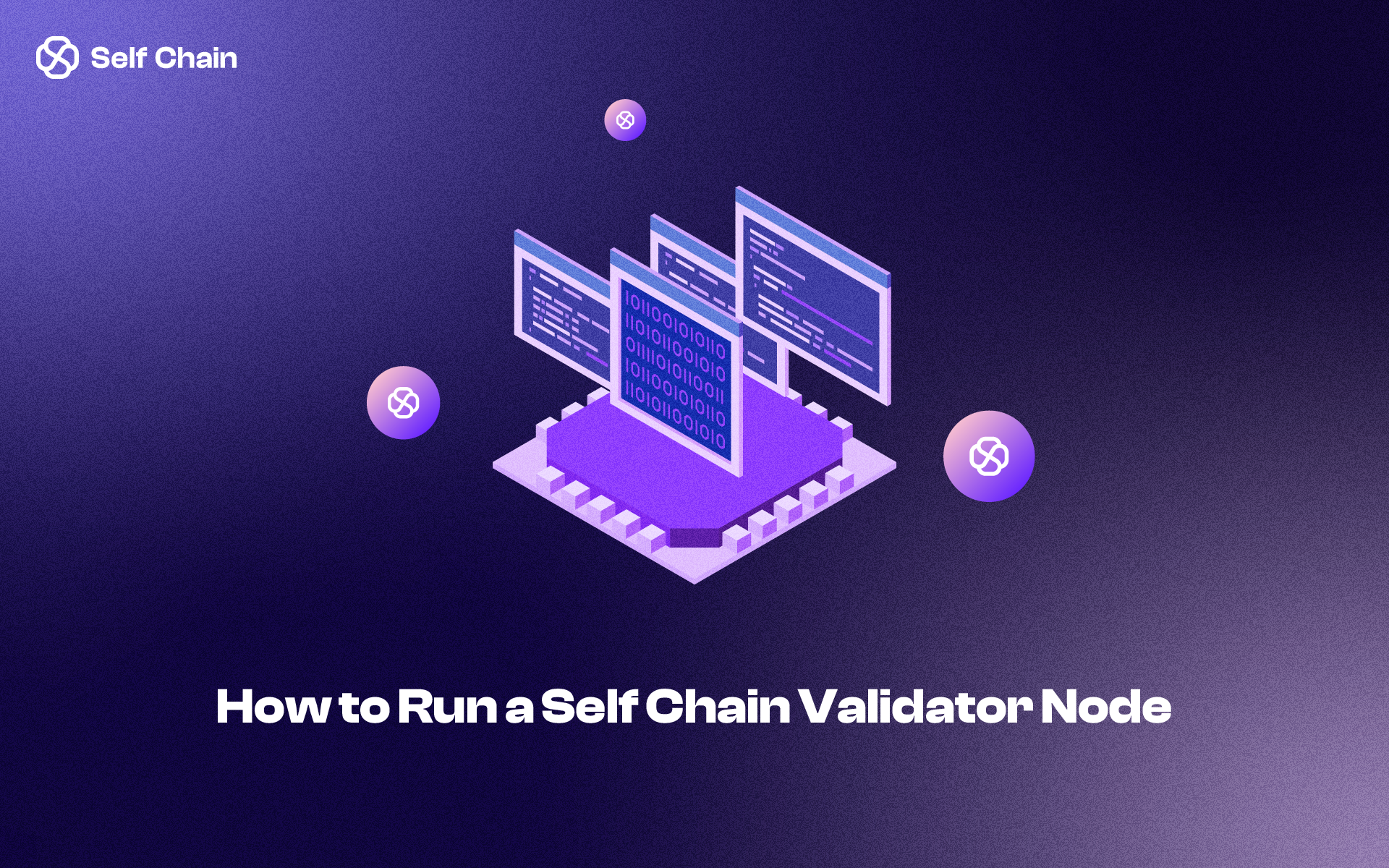How to Run a Self Chain Validator Node

As of September 25, 2024, Self Chain operates with 76 active validators, playing a crucial role in strengthening the network’s security and decentralization.
Self Chain uses a Proof-of-Stake (PoS) consensus mechanism, where validators are essential to maintaining the network’s security, verifying transactions, and keeping the blockchain running smoothly. Running a validator node on Self Chain offers an excellent opportunity for users to actively contribute to the network’s success while earning staking rewards.
In this guide, we’ll outline the core steps for setting up and running a Self Chain validator node. We’ll also provide an overview of the role validators play in ensuring the network's stability and offer guidance on how to maintain and monitor your node.
Full Node & Validator documentation
Key Responsibilities of Self Chain Validators
Validators are vital for ensuring the integrity and smooth operation of the Self Chain network. Their tasks include:
- Validating Transactions: Validators process transactions and ensure that they are added correctly to the blockchain.
- Participating in Governance: Validators contribute to important network decisions, such as protocol upgrades and parameter adjustments.
- Maintaining Uptime: Validators are responsible for maintaining high uptime and staying synced with the network to avoid penalties or slashing.
By running a validator node, you can contribute to the network’s health, secure your investments, and earn rewards based on your participation.
Node Setup: Getting Started
Before you can become a validator, you’ll need to set up a full node. A full node connects to the network, syncs the blockchain data, and serves as the foundation for a validator node.
Hardware Requirements:
To run a node efficiently, we recommend the following hardware:
- CPU: 4 or 8 cores
- RAM: 16GB
- Disk Storage: 100GB
These requirements ensure optimal performance and are expected to scale as the Self Chain network grows.
Node Configuration: Basic Setup
Once your node is set up, you’ll need to configure it to function smoothly within the network. This includes connecting it to other nodes (peers), enabling APIs for monitoring, and adjusting settings to ensure optimal performance.
- Network Connection: Your node will need to sync with the Self Chain network by connecting to peers and downloading the blockchain’s data. This process is essential for ensuring that your node stays up to date with the latest transactions and blocks.
- APIs and gRPC: These features allow you to monitor your node’s activity and performance. You can enable APIs to track transactions, check validator status, and manage node performance.
Running a Validator Node
Once your node is fully set up and synchronized with the network, you can take the next step of becoming a validator. This involves staking SLF tokens and registering your node as a validator on the network. The more tokens you stake, the more likely you are to be selected to validate transactions and earn rewards.
Validators need to stay actively involved in maintaining their node’s uptime and ensuring that it stays connected to the network. Missing blocks or failing to validate properly can result in penalties or slashing, which reduces your stake.
Monitoring and Managing Your Validator
After becoming a validator, it’s essential to monitor your node’s performance; otherwise, you may face slashing, which can result in asset loss. Keep track of key metrics such as:
- Block Height: Ensure your node is processing new blocks at the same pace as the network.
- Commission and Rewards: You can claim commission from delegators who have staked tokens with your validator and track the rewards earned from successfully validating blocks.
- Node Status: Monitor your node to ensure it remains connected to the network and continues to validate transactions smoothly.
Validator Node Management with NodeOps
For those looking for a more streamlined way to manage their validator, NodeOps offers a simplified solution. NodeOps allows you to set up, run, and manage your validator node with ease, reducing the need for hands-on technical involvement.
Troubleshooting
If you encounter any issues while running a Self Chain validator, please refer to the troubleshooting documentation or reach out to our community on Discord for assistance.
By becoming a validator on Self Chain, you contribute to the security, stability, and decentralization of the network. Validators are an integral part of Self Chain’s infrastructure, ensuring its long-term success while offering opportunities for staking rewards. Stay updated with the latest releases and start your journey as a Self Chain validator today!
About Self Chain
Self Chain is the first Modular Intent-Centric Access Layer1 blockchain and keyless wallet infrastructure service using MPC-TSS/AA for multi-chain Web3 access. The innovative system simplifies the user experience with its intent-focused approach, using LLM to interpret user intent and discover the most efficient paths.
Self Chain ensures that onboarding and recovery are effortless with keyless wallets that grant users complete self-custody over their assets. In addition, it provides automated rewards to dApps when they efficiently resolve user intent, further enhancing the user experience. Moreover, Self Chain incorporates Account Abstraction with MPC-TSS to provide secure signing and reduce transaction fees. It's a platform that redefines blockchain interaction, making it more secure and user-friendly for everyone.
In a world where blockchain technology is becoming increasingly essential, the user experience remains a critical factor in its adoption. Intents and Keyless Wallets are set to transform the landscape, making blockchain interactions more accessible, efficient, and secure. As we move forward, the blockchain industry has the opportunity to provide users with a seamless and enjoyable experience, unlocking the full potential of this groundbreaking technology.
